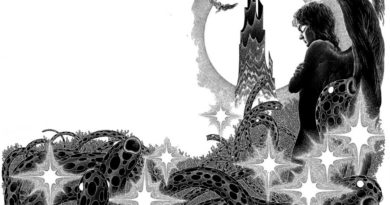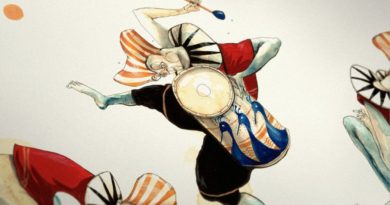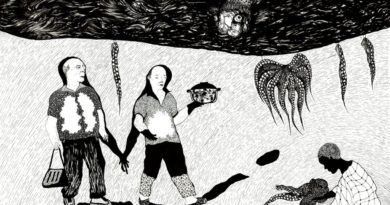Look from afar: Fred Abuga
“I can add strokes to infinity…”
You need to step away slowly from Fred Abuga’s paintings. Begin by getting lost in a rainstorm of colour formed from hundreds of pieces, and then move out to see the daily scenes that come to life at a distance. Interested in art from a young age and going on to receive his Fine Arts education in Nairobi, Kenyan artist Fred Abuga drew the attention of his teachers and peers early on. In his current work, Abuga fills his canvases from one end to the other with his carefully developed technique, lending an impressionistic stroke to the warm world of its central figures. Having already exhibited his work nationally and internationally thus far, Abuga told us a bit about the art scene in Kenya, his unique technique, and other work outside of his paintings.
Interview by Leyla Aksu
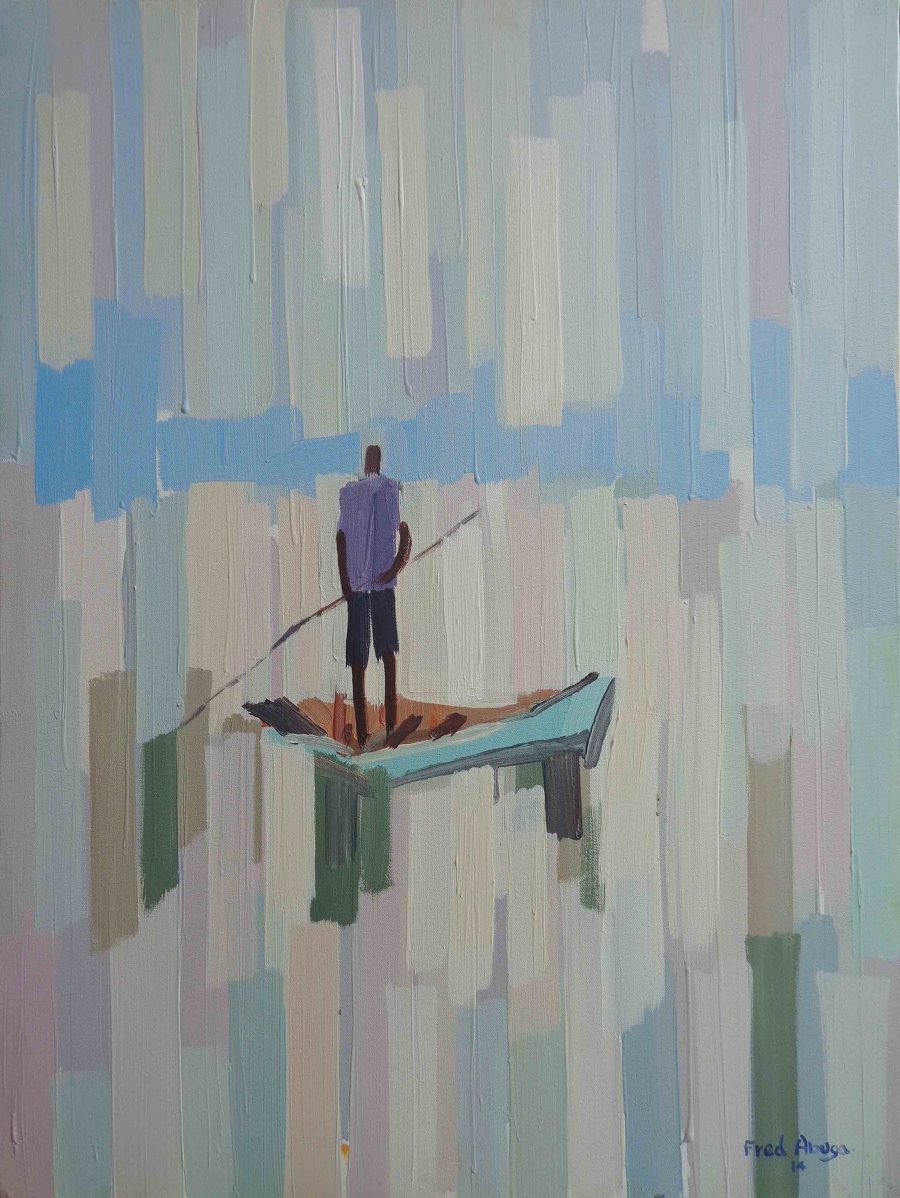
Can you tell us a bit about growing up in Kenya? When did you first start getting interested in art?
Growing up in Kenya is fun despite the challenges here and there. I spent most of my childhood in the city where I did my schooling, and, ultimately, I developed a keen interest in art. Nairobi is a vibrant city with social and welcoming cultures, while the political scene is democratic and tense. In a way, all these aspects came to influence my future artistic creations. I nurtured my talent at a tender age, when I used to create toys and drawings for my peers. That’s when I knew art is in me.
You received the title of “chief artist” through your various creative endeavours at school. Were there other forms of expression you were interested in?
I received the title “chief artist” because of my contributions to the drama and journalism clubs in school, painting backdrops and drawing caricatures. Occasionally, I was the one who would draw charts on the black board for the class teacher. [For me] other forms of art included comics and collages.
How did your fine arts education in Nairobi shape your view of art? What were some early reactions to your work?
My formal study is in Fine Art. That essential bit, especially the history of Art, is quite interesting in [terms of] understanding the masters of the past and their work, to provide a comparison of their struggles and mine. Sometimes it’s not about them inspiring my art. My early creations were basic themes like landscapes and portraits.
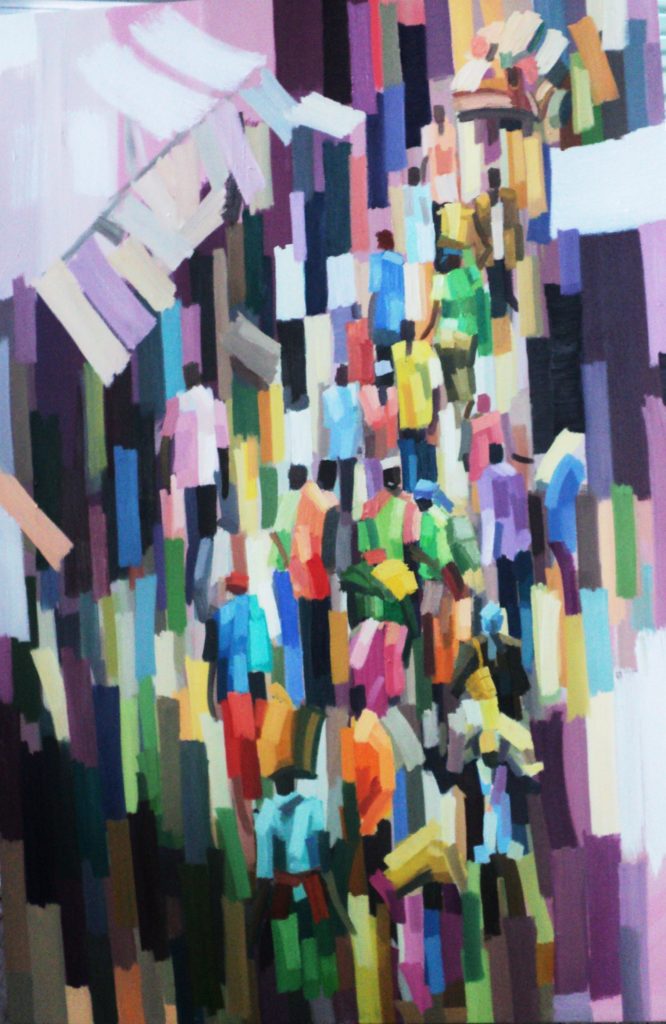
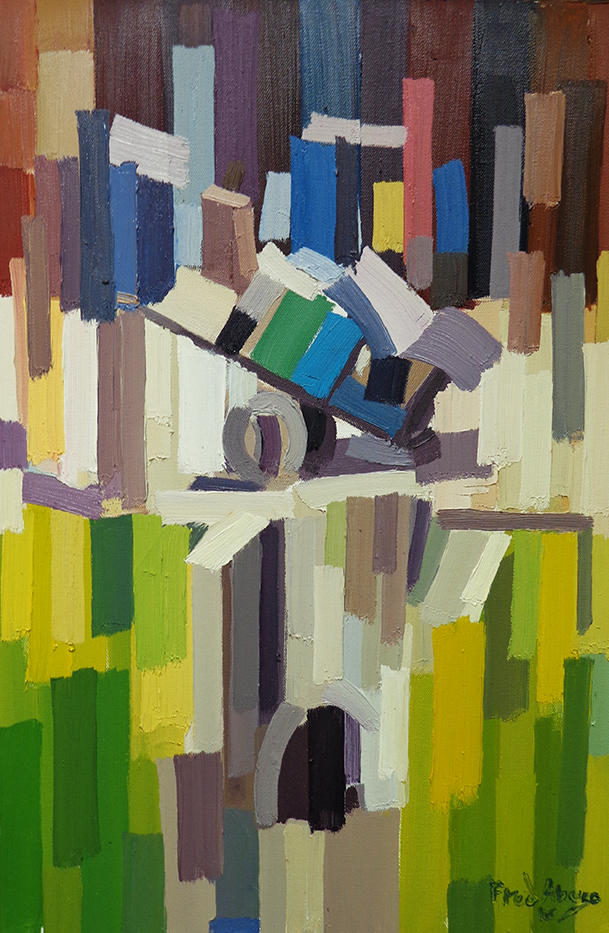
In regards to subject matter or just simply picking up a brush, what inspires you to work?
When I start to work, more often I know what I am going to work on. Then with the right mood and music, I am good to go. I do my research beforehand on the subject matter.
Can you tell us a bit about the local art scene in Kenya?
The local art scene in Kenya is on a “take-off” considering that new artists are joining the industry, while artistic creations are both modern and contemporary. Several galleries and auctions are keen on quality and content, which puts it on competitive ground in the international market.
You have an incredibly distinctive and expressive painting style, creating an impressionistic world of bold strokes. How has it developed over the years? What about it appeals to you?
Yes, my paintings are very expressive with bold strokes of distinct colours. That is how far the technique has developed – initially, the strokes were air lines and almost blended, making the scene look hazy. It appeals to me a lot because it reveals the colour theory more than before.
Can you describe your creative process? How does a piece develop, and does that change based on medium?
My creative process is simple and basic. First, I have a theme in my mind for which I have done research and sketches; these form the plot. So if it’s a market scene, I look for gestures, poses, and other forms that would make the scene relevant. I use mostly oils on canvas and acrylics for plain scenes like lakes and fishermen. On average, one piece takes like three weeks to a month, but I can add strokes to infinity, making it an on-going process.
Each of your paintings creates a vibrant harmony of colour. How do you select your colour palette, and how do you see the role of colour in your compositions?
The theme determines the colour palette: If it’s a sun set, then you have reds, oranges, and yellows, giving it a warm feeling; a lake scene, early in the morning, is a variation of cold and warm blues. Basically, it’s a play of analogous colours: A set of complementary versus a set of supplementary colours. Colour plays a big role in my work; like a magician, it tricks the eye of the viewer.
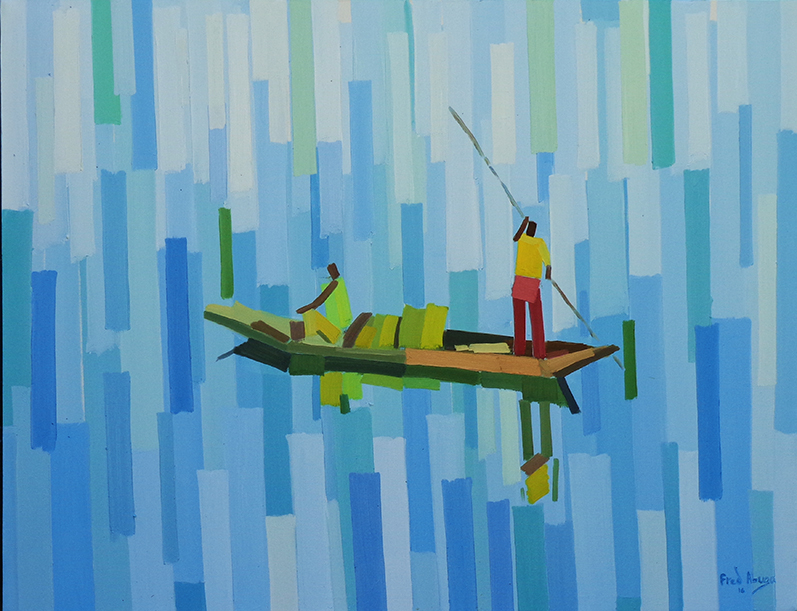
Distance also plays an important role in the reception of your pieces, and you’ve described the intention behind your work as “play[ing] with reasoning and mak[ing] people think bigger thoughts.” Can you elaborate on that? Do you find a relationship between the two?
The more you move back from the painting, the more the details form. This is because tints and shades of colour have a high affinity with each other at distance and tend to break when you are at close range. This aspect is what fascinates viewers, so it is like they are seeing something different each time.
You’re currently working on a series of images inspired by classical music and utilizing mixed media. Can you tell us a bit about this project and the materials you are working with?
Well, when I am not painting, I also create mixed media constructions. It started as a series of works revolving around terrorism, after the bombing of the US Embassy here in Nairobi in 1998, where I would create mock debris to illustrate such atrocities. Then I started to create a less evocative body of work like music. With constructions the work is more tangible, and I can express social themes strongly other than with paint. So with the musical pieces, it’s a project that I had shelved, but I want to revive it once more.
Where would you like to go from here? What would you like to do next?
I want to create Art more and more that people will see and appreciate.

